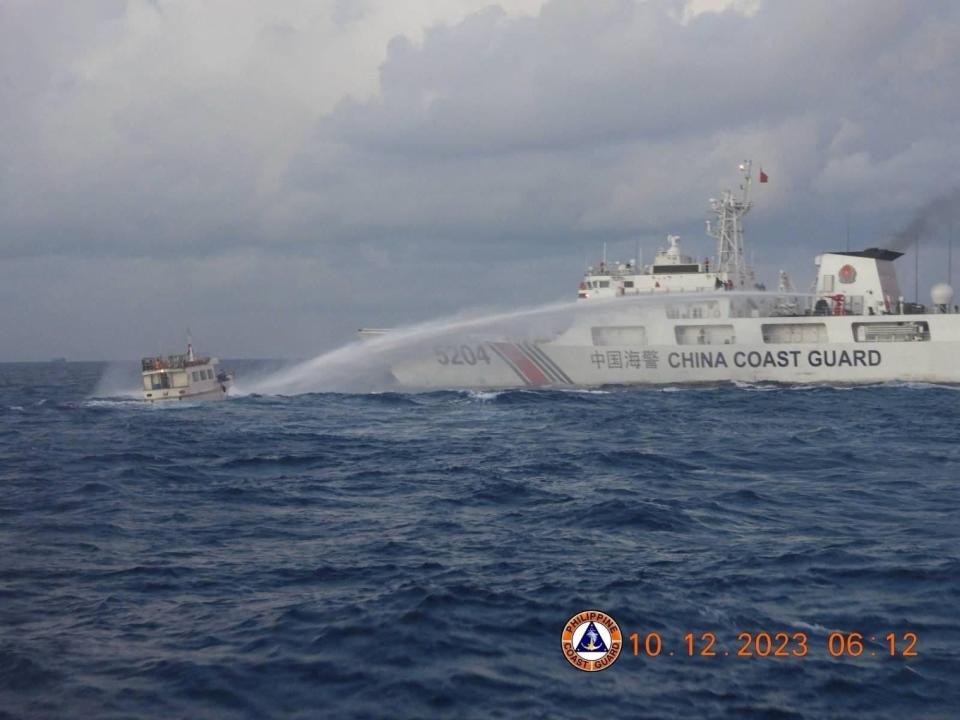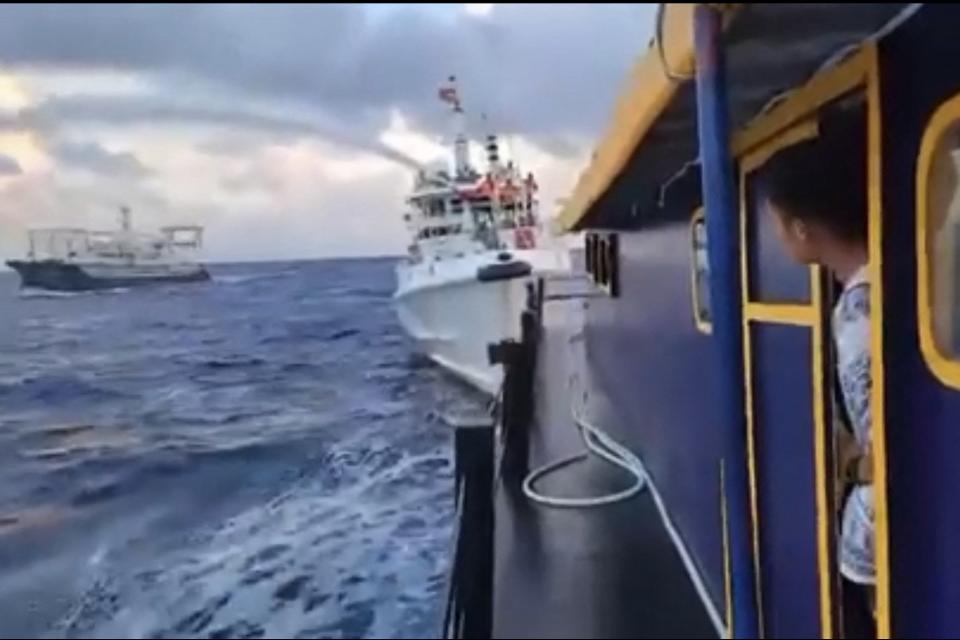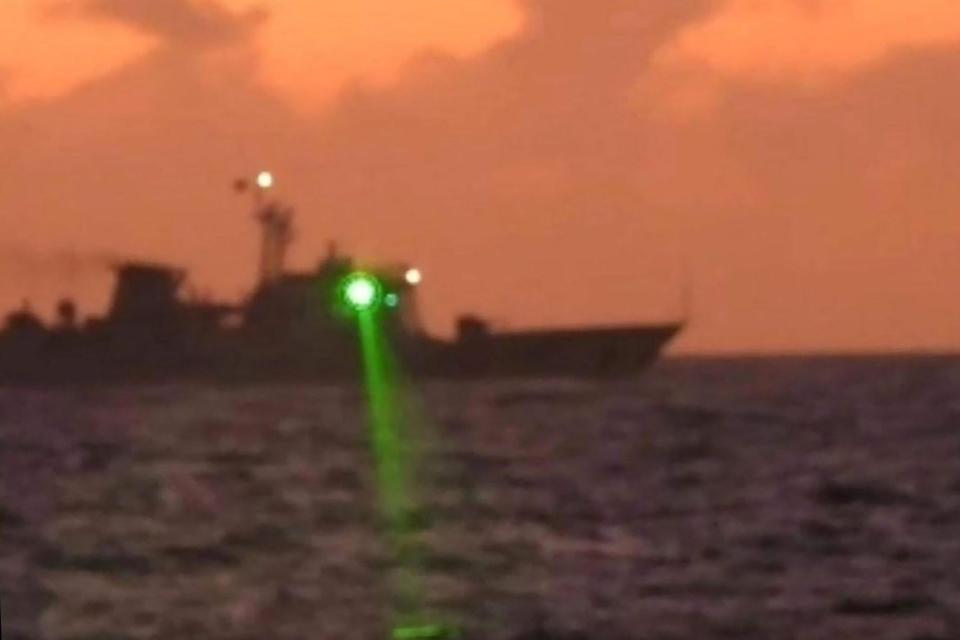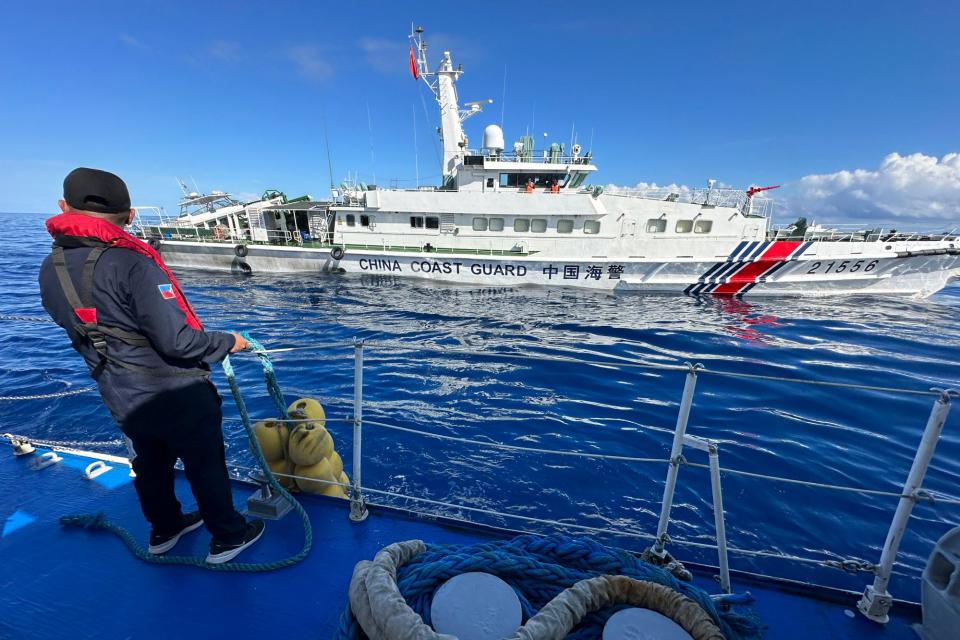Will more assertive Philippine approach to South China Sea pay off in long run?
Philippine coastguards have escorted boats to the South China Sea to resupply its military base on the disputed Second Thomas Shoal seven times in the past four months.
Each time, they have complained about China's coastguards and maritime militia obstructing their journey to the disputed reef in the South China Sea or making dangerously close passes.

A Chinese Coast Guard ship uses a water cannon against a Filipino resupply vessel heading towards the disputed Second Thomas Shoal, in the South China Sea on Sunday. Photo: Reuters alt=A Chinese Coast Guard ship uses a water cannon against a Filipino resupply vessel heading towards the disputed Second Thomas Shoal, in the South China Sea on Sunday. Photo: Reuters>
On Sunday, a steel-hulled Chinese coastguard ship used its water cannon against a much smaller Philippine supply boat and eventually collided with it in the most serious confrontation between the two sides in a year.
Do you have questions about the biggest topics and trends from around the world? Get the answers with SCMP Knowledge, our new platform of curated content with explainers, FAQs, analyses and infographics brought to you by our award-winning team.
The Philippines said afterwards that the incident had damaged the boat's engines, "disabling the vessel and seriously endangering the lives of its crew".
It followed a similar collision in late October, again involving a Chinese coastguard ship and supply vessel.
Manila has chosen to publicise these confrontations ever since an incident in February, when Chinese coastguards shone a military-grade laser beam at Philippine boats near the Second Thomas Shoal and temporarily blinded a crew member. It calculates that publicity will help increase international support for its position.
"I believe that our effort in the transparency initiative has been very successful in rallying support from the international community to condemn the illegal actions of China and to make the Filipino people aware of what's happening," Commodore Jay Tarriela, a spokesman for the coastguard, said last month after another confrontation where Chinese forces used water cannons against Philippine ships.
After the confrontation on Sunday, the United States, a long-term ally of Manila, said the Chinese ships had acted dangerously and warned that an armed attack on the Philippine coastguard could trigger their mutual defence treaty.
Sweden, Britain, New Zealand and Germany called for international law and an arbitration ruling that invalidated Beijing's sea claims to be respected. Meanwhile, Australia, Japan and the European Union echoed the US in describing China's actions as "dangerous".
But although Manila appears confident in the strategy, diplomatic observers are sceptical about its long-term chances of success and whether it can prevent future confrontations between Chinese ships and those from the other South Sea claimants.
They say that even if Beijing and Southeast Asian countries can agree a code of conduct for the disputed waters, no one can be sure it will change Chinese behaviour, especially when its crews are increasingly well-prepared and well-equipped for future confrontations.

This frame grab from handout video footage taken by the Philippine Coast Guard shows a Chinese vessel allegedly ramming a supply boat on Sunday. Photo: AFP alt=This frame grab from handout video footage taken by the Philippine Coast Guard shows a Chinese vessel allegedly ramming a supply boat on Sunday. Photo: AFP>
The dispute began in 1999, when Manila deliberately grounded a second world war ship, the Sierra Madre, on the shoal after China began building on Mischief Reef, another disputed territory around 30km (19 miles) from the Second Thomas Shoal.
The ship, although it is rusting and needs regular resupply, now serves as a military base. Beijing has demanded its removal.
Manila's current publicity drive has seen the government releasing video footage and photos that show Chinese ships following, surrounding and sailing close to its vessels - often leaving just a few metres between the ships.
The country's national security council and other officials have also taken to social media to rebut China's claims about the encounters, while Filipino and foreign journalists have been invited onto coastguard ships during resupply missions to troops stationed on the reef.
The series of confrontations have united Filipinos across the political divide in support of the government's stance - a process that has gained momentum since August, when, for the first time this year, Chinese coastguards fired a water cannon at ships carrying supplies to troops stationed on the disputed reef and their coastguard escorts.
The strong response from Manila signals a change in policy since President Ferdinand Marcos Jnr took office in June last year.
His predecessor, Rodrigo Duterte, had sought warmer ties with Beijing while trying to distance himself from the United States.
"This is part of shaping the narrative in the South China Sea and preventing Chinese state propaganda from changing the status quo in the international public opinion space," said Rommel Jude Ong, a professor at the Ateneo School of Government in Manila.
The Philippines often cites a 2016 ruling by an international tribunal that invalidated Beijing's extensive claims to the waters of the South China Sea, based on ancient maps and accounts of historical fishing activity, and marked out by the so-called "nine-dash line".
The Permanent Court of Arbitration in The Hague said the historic rights to resources in the waters claimed by Beijing disappeared when it signed the United Nations Convention on the Law of the Sea in 1982.
The tribunal also ruled that the Second Thomas Shoal, known in China as Renai Jiao and in the Philippines as Ayungin, is only exposed at low tide and submerged at high tide, which prevents the waters around it from being claimed as a territorial sea or exclusive economic zone.
Beijing has rejected the ruling and declined to take part in the proceedings, saying that the court did not have the power to decide on issues of sovereignty. The court said its decision did not touch on those issues.
Ong, who is also a retired rear-admiral of the Philippine Navy, said that beyond its public relations campaign, Manila also needed to work with countries such as Japan, Australia, Britain and France - as well as the US - on defence and security.
Japan and the US have been vocal in supporting Manila's complaints of Chinese coastguards near the Second Thomas Shoal.
Ong also said it would be "the ideal and logical strategy" for the Philippines to band together with other Southeast Asian claimants in the South China Sea - Vietnam, Malaysia and Brunei - to "generate the gravitas to mitigate the asymmetry of power between Asean [the Association of Southeast Asian Nations] versus China".
"But this is not to be," he said. "The dynamics with Asean, and the nature of the bilateral relationship of the other claimants, prevents such possibility.
"A divided Asean - and claimants - allows the CCP [Chinese Communist Party] to assert its position in the South China Sea with minimal challenge."
The bloc prefers to adopt a collective approach to discussing the claims, but Beijing talks to Asean as a whole while also negotiating bilaterally with each of the claimant countries.
Talks between China and Asean on agreeing a code of conduct (COC) to prevent collisions and accidents at sea have been delayed for years, partly as a result of Covid-19.

In February a Chinese coastguard ship shone a "military grade laser" at a Philippine ship, allegedly causing temporary blindness among a crew member. Photo: AFP alt=In February a Chinese coastguard ship shone a "military grade laser" at a Philippine ship, allegedly causing temporary blindness among a crew member. Photo: AFP>
The process has also been delayed due to disagreements between countries with stronger economic and political ties with Beijing and those with a more distant relationship over issues such as whether to include third parties, for example, the US, in the dispute or the legitimacy of the 2016 Hague ruling.
China and 20 other countries also signed the non-binding Code for Unplanned Encounters at Sea (Cues) in 2014 to prevent accidental clashes, but that code does not cover coastguards and militias.
"As neither an expanded Cues nor the COC have been finalised - and probably won't be for the foreseeable future - they won't have any impact on influencing China's behaviour," said Ian Storey, a senior fellow at the ISEAS-Yusof Ishak Institute in Singapore who focuses on maritime security.
"Whether the final agreements will do so depends on two things: first, how strong their provisions are; and second, whether China chooses to abide by them or not."
Zhou Chenming, a researcher at the Yuan Wang military science and technology think tank in Beijing, said the best way to prevent inadvertent clashes was to maintain close communication. He said unlike in the past, the PLA Navy's training programme covers how to make close encounters with other ships while avoiding collisions.
"After Chinese forces became more combat-oriented, [the PLA] has taken the initiative to deal with such crises," Zhou said.
Ong also said the code of conduct and Cues would have no impact if China refused to abide by the rules.

A Philippine coastguard watches on as Chinese ship follows his vessel near the Second Thomas Shoal last mont. Photo: AP alt=A Philippine coastguard watches on as Chinese ship follows his vessel near the Second Thomas Shoal last mont. Photo: AP>
He said the strategy of exposing Beijing's actions near the Second Thomas Shoal should be paired with matching China in its sustained maritime presence and in protecting economic activities in the Philippine exclusive economic zone, which includes the Second Thomas Shoal.
He also said Asean should build up its Asean Coast Guard Forum as a "norm-setting institution" for Southeast Asia.
"In the future, it might be a significant player that can impose reputational costs on China and other countries that employ its maritime agencies as tools of coercion."
This article originally appeared in the South China Morning Post (SCMP), the most authoritative voice reporting on China and Asia for more than a century. For more SCMP stories, please explore the SCMP app or visit the SCMP's Facebook and Twitter pages. Copyright © 2023 South China Morning Post Publishers Ltd. All rights reserved.
Copyright (c) 2023. South China Morning Post Publishers Ltd. All rights reserved.

 Yahoo Finance
Yahoo Finance 